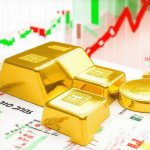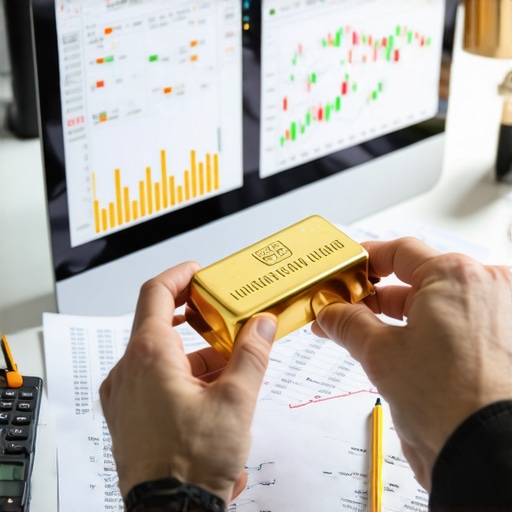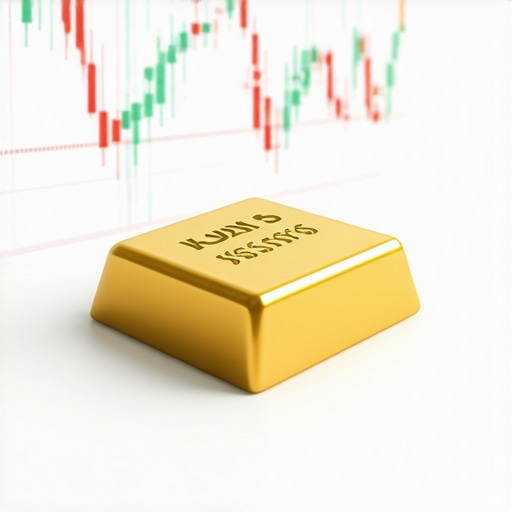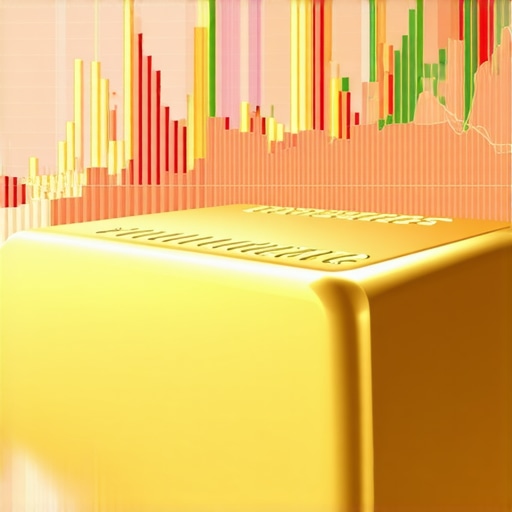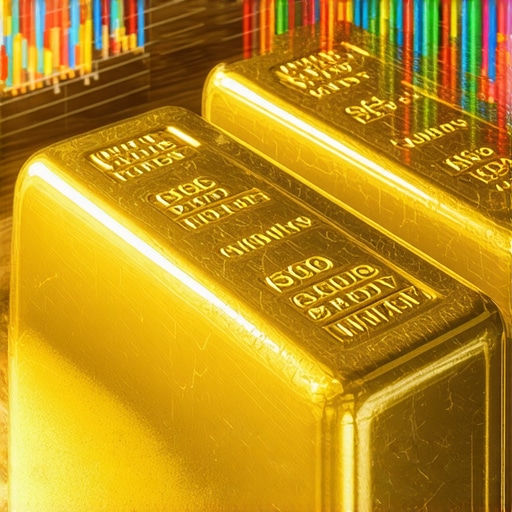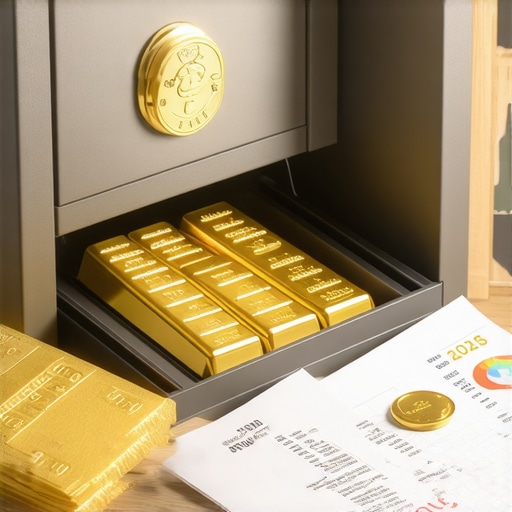Unveiling the Nuances of Long-Term Gold Investment Strategies in a Dynamic Global Economy
As the world navigates an era marked by economic volatility and evolving geopolitical landscapes, gold continues to stand as a resilient pillar in diversified investment portfolios. For investors aiming to secure wealth and capitalize on future market trends, devising a comprehensive, long-term gold investment plan for 2025 and beyond requires an intricate understanding of supply-demand dynamics, macroeconomic indicators, and emerging financial instruments.
Integrating Macro-Economic Indicators into Gold Portfolio Diversification
Global economic indicators such as inflation rates, interest rate trajectories, and currency fluctuations serve as critical signals for adjusting gold holdings. Historically, during inflationary periods, gold acts as a hedge, preserving purchasing power. Investors should monitor macroeconomic trends to time their entry and exit points effectively, balancing physical gold investments with ETFs and mining stocks for optimal diversification.
Advanced Tactics for Navigating Gold Price Volatility
Incorporating technical analysis techniques such as moving averages, Fibonacci retracements, and momentum indicators can significantly enhance decision-making. Given the potential for short-term fluctuations amidst long-term growth, deploying algorithmic trading strategies and leveraging market sentiment analysis will enable investors to maximize gains while mitigating risks. This layered approach to trading requires a disciplined framework, especially in volatile periods predicted for 2025.
What Role Will Central Bank Policies Play in Shaping Gold Prices?
How will the evolving gold purchasing strategies of central banks influence the market trajectory in 2025?
Central banks worldwide have resumed substantial gold acquisitions as part of their reserves diversification efforts, signaling confidence in gold’s long-term store of value. According to recent reports, central bank activity is a pivotal driver of gold price trends, especially amidst global monetary policy shifts. Investors should consider these movements as indicators of underlying market strength or potential corrections.
Building a Resilient Gold Investment Portfolio for 2025 and Beyond
A sophisticated long-term plan must encompass physical gold, gold ETFs, mining stocks, and innovative financial derivatives. Each asset class offers distinct risk-return profiles, with physical gold providing stability, ETFs delivering liquidity, and stocks enabling growth exposure. Developing a coherent strategy involves regular portfolio rebalancing aligned with macroeconomic forecasts and market sentiment metrics.
What Are the Best Practices for Safely Acquiring Gold from Reputable Dealers?
Ensuring the authenticity and security of gold assets is paramount. Investors should favor established dealers with transparent provenance and secure storage options. For expert guidance, explore our comprehensive buying guide.
Engaging with professional market insights and contributing your perspective can further refine your strategic approach. Stay informed with trusted sources like the World Gold Council, which provides authoritative data and analysis on gold market developments. Embracing a disciplined, research-backed investment philosophy will position your portfolio to thrive amid the uncertainties of 2025 and beyond.
Understanding the Impact of Geopolitical Shifts on Gold Investment Strategies
In an increasingly interconnected world, geopolitical developments can significantly influence gold prices, often acting as catalysts for market volatility. For instance, tensions in key regions or shifts in international alliances may prompt central banks and investors to reassess their gold holdings. Experts advise closely monitoring global political landscapes, as these can serve as early indicators of potential price movements. To deepen your understanding, consult authoritative sources like the Emerging Gold Demand Factors report which provides insights into future price drivers.
Leveraging Quantitative Models for Predictive Gold Investment
Advanced investors are increasingly turning to quantitative models that incorporate machine learning and big data analytics to forecast gold price trends. These models analyze vast datasets, including macroeconomic indicators, supply-demand metrics, and sentiment analysis, to generate actionable insights. Implementing such tools requires a deep technical expertise but can dramatically improve timing and decision-making accuracy. Exploring resources like technical trading techniques for 2025 can help develop these sophisticated strategies.
How Will Emerging Financial Instruments Reshape Gold Investment Opportunities?
Could innovative financial products like tokenized gold and decentralized finance (DeFi) platforms redefine traditional gold investing by 2025?
The advent of blockchain technology and DeFi platforms is revolutionizing access to gold investments, making them more transparent, liquid, and accessible to retail investors. Tokenized gold, representing physical gold on a blockchain, offers a seamless way to trade and transfer assets globally without the need for physical custody. According to recent analyses by industry leaders, these innovations could substantially lower entry barriers and enhance liquidity, thus reshaping the landscape of gold investment. For a comprehensive understanding, refer to our overview of gold investment options.
Are You Prepared to Adjust Your Gold Portfolio in Response to Global Economic Shifts?
Adapting your investment strategy to macroeconomic changes is crucial for long-term success. Tracking shifts in global economic policies, inflation expectations, and currency valuations enables proactive portfolio rebalancing. Regularly revisiting your allocations between physical gold, ETFs, and mining stocks ensures resilience against unforeseen disruptions. For tailored guidance, consider exploring strategies outlined in our building a diversified gold portfolio. Staying informed through trusted sources like the World Gold Council remains essential for maintaining an edge in dynamic markets.
Harnessing Emerging Technologies: The Future of Gold Investment Platforms
As digital transformation accelerates across the financial sector, innovative platforms leveraging blockchain and artificial intelligence are redefining how investors engage with gold assets. These technological advancements promise heightened transparency, enhanced security, and unprecedented liquidity. For instance, tokenized gold allows investors to buy, sell, and transfer fractional ownership seamlessly, bypassing traditional custodial hurdles. According to a comprehensive report by the World Gold Council, such platforms are poised to capture a significant share of the global gold market, especially among retail investors seeking diversified exposure.
How can institutional investors leverage blockchain-based gold derivatives to hedge risks effectively?
Institutions can utilize blockchain-enabled derivatives and ETFs to hedge against currency fluctuations and inflation with greater precision. These instruments offer real-time pricing transparency and reduced settlement times, facilitating dynamic risk management strategies. As these platforms mature, their integration into traditional portfolios will become essential for long-term resilience.
Strategic Asset Allocation: Balancing Physical Gold with Digital Innovations
A sophisticated approach to gold investment involves an optimal mix of physical assets and digital innovations. Physical gold—coins, bars, and bullion—continues to serve as a tangible store of value, especially during periods of systemic financial crisis. Conversely, digital assets like tokenized gold and gold-backed stablecoins offer liquidity and ease of transfer, making them ideal for active portfolio management. Experts recommend a tiered allocation strategy, adjusting holdings based on macroeconomic signals and market sentiment. Regular portfolio reviews, aligned with evolving technological trends, will be crucial in maintaining the right balance.

Incorporating visual aids such as portfolio allocation charts can provide clarity on diversification strategies, especially when integrating traditional and digital gold assets.
Deep Dive: The Nuances of Gold Price Correlation with Global Macroeconomic Variables
Understanding the subtle interplay between gold prices and macroeconomic factors is vital for sophisticated investors. Gold often exhibits inverse correlation with interest rates, as higher rates diminish the appeal of non-yielding assets. Conversely, during geopolitical tensions or currency devaluations, gold’s appeal as a safe haven intensifies. A recent study published in the Journal of Financial Markets highlights how real-time economic indicators can be integrated into predictive models for nuanced investment decisions. Advanced quantitative models, incorporating machine learning, can parse vast datasets—ranging from inflation expectations to geopolitical risk indices—to forecast short- and long-term price movements.
Are your current models incorporating the latest geopolitical risk factors? If not, exploring emerging data sources and machine learning algorithms could significantly enhance your predictive accuracy and strategic agility.
To deepen your understanding of macroeconomic impacts on gold, we invite you to explore our detailed analysis and stay ahead of market shifts by subscribing to our expert insights newsletter.
Harnessing Technological Advancements to Revolutionize Gold Investment Platforms
The rapid evolution of blockchain and artificial intelligence is transforming the landscape of gold investment, offering unprecedented levels of transparency, security, and accessibility. Innovative platforms utilizing these technologies enable investors to engage in fractional ownership, real-time trading, and seamless transfers without the traditional custodial constraints. Industry reports from the World Gold Council emphasize that such technological integrations are poised to dominate the future of gold markets, particularly appealing to retail investors seeking diversified exposure and liquidity.
What Role Will Digital Gold and Blockchain Play in Shaping Future Investment Trends?
The emergence of tokenized gold and blockchain-based derivatives signifies a paradigm shift, allowing investors to hold and transfer gold assets digitally with enhanced efficiency. These instruments reduce transaction costs, improve liquidity, and facilitate global trading, making gold more accessible than ever before. Experts suggest that by 2025, a significant portion of gold trading could occur on decentralized platforms, fundamentally altering traditional investment paradigms. To explore these innovations further, review our comprehensive overview of gold investment options.
How can institutional investors leverage blockchain-based derivatives for risk mitigation?
Institutions can utilize blockchain-enabled gold-backed derivatives and ETFs to hedge against macroeconomic risks such as inflation and currency fluctuations. These instruments offer real-time transparency, swift settlement, and reduced counterparty risk, providing a strategic advantage in dynamic markets. As these platforms mature, they will become integral to sophisticated risk management frameworks, enabling more agile and precise hedging strategies in volatile environments.
Strategic Asset Allocation: Balancing Physical Gold with Digital Innovations
An advanced gold investment strategy involves a nuanced mix of tangible assets and digital innovations. Physical gold offers stability and protection during systemic crises, while digital tokens and stablecoins provide liquidity and ease of transfer. A tiered allocation approach, guided by macroeconomic signals and market sentiment, allows investors to adapt to shifting economic landscapes. Regular portfolio rebalancing, leveraging data-driven insights, ensures resilience and optimal performance in a complex financial ecosystem.
How Can Investors Safely Acquire Gold from Reputable and Insured Dealers?
Ensuring the authenticity, provenance, and secure storage of gold assets is essential for safeguarding investments. Investors should prioritize established dealers with transparent supply chains and robust insurance policies. For detailed guidance, consult our comprehensive buying guide. Engaging with trusted sources and verifying dealer credentials minimizes counterparty risks and secures your assets against fraud and theft.
Stay informed and refine your strategies by subscribing to expert insights from the World Gold Council, which provides authoritative data on market trends and future forecasts. A disciplined, research-backed approach will position your portfolio to thrive amid the uncertainties and opportunities of 2025 and beyond.
How Will Geopolitical Developments Influence Global Gold Market Dynamics?
Geopolitical tensions, regional conflicts, and shifts in international alliances are potent catalysts for gold price movements. Investors must monitor global political landscapes, as these factors often prompt central banks and institutional investors to adjust their holdings. Early recognition of emerging geopolitical risks, supported by sources such as the Emerging Gold Demand Factors report, allows for proactive portfolio adjustments and risk mitigation.
Leveraging Quantitative and Machine Learning Models to Forecast Gold Trends
Advanced investors increasingly harness machine learning algorithms and big data analytics to predict gold price trajectories. These models analyze macroeconomic indicators, supply-demand metrics, and sentiment data to generate nuanced forecasts. Implementing such tools enhances decision-making precision, especially during volatile periods predicted for 2025. To develop expertise, explore resources like technical trading techniques for 2025.
How Might Emerging Financial Instruments Reshape Gold Investment Opportunities?
Could tokenized gold and DeFi platforms fundamentally alter the traditional gold investment landscape by 2025?
Blockchain-based financial products, including tokenized gold and decentralized finance (DeFi) platforms, are democratizing access to gold investments by reducing barriers and increasing liquidity. These innovations offer fractional ownership, seamless transfers, and global accessibility, which could significantly expand retail participation. Industry leaders predict that by 2025, these instruments will constitute a substantial share of the gold market, transforming how investors diversify and hedge their portfolios. For a thorough understanding, see our overview of gold investment options.
Are You Prepared to Adjust Your Gold Portfolio in Response to Evolving Global Economic Conditions?
Adapting to macroeconomic shifts—such as inflation expectations, currency devaluations, and monetary policy changes—is vital for long-term success. Regularly reviewing and rebalancing your allocations between physical gold, ETFs, and digital assets ensures resilience. Utilizing data-driven insights and staying informed through trusted sources like the World Gold Council enhances strategic agility, positioning your portfolio for sustained growth.
Embracing Digital Transformation: The Future of Gold Investment Platforms
The integration of blockchain, AI, and machine learning into gold investment platforms promises heightened transparency, security, and operational efficiency. These technological innovations facilitate fractional ownership, real-time trading, and global access, empowering investors with diverse options. As industry reports suggest, these platforms will catalyze broader adoption and liquidity in the gold market, especially among retail investors seeking innovative diversification avenues.
Expert Insights & Advanced Considerations
1. Diversify with Emerging Digital Assets
Integrating tokenized gold and blockchain-based platforms will be crucial for investors seeking liquidity and flexibility, especially as digital financial instruments continue to reshape the market landscape.
2. Leverage Quantitative and AI Models
Advanced investors should utilize machine learning algorithms and big data analytics to forecast gold price trends, enabling more precise and timely decision-making in volatile environments.
3. Monitor Central Bank and Geopolitical Movements
Keeping a close eye on central bank gold purchases and geopolitical developments provides early indicators for market shifts, allowing proactive portfolio adjustments and risk mitigation.
4. Embrace Technological Innovations
Utilize platforms that incorporate AI, blockchain, and fractional ownership to optimize asset management, enhance security, and capitalize on new liquidity channels.
5. Develop a Tiered Asset Allocation Strategy
Balance physical gold with digital tokens and derivatives, guided by macroeconomic signals and market sentiment, to build a resilient and adaptable investment portfolio for 2025 and beyond.
Curated Expert Resources
- World Gold Council: Offers comprehensive research, authoritative market data, and insights on gold demand, supply, and market trends essential for informed decision-making.
- Buy Gold Now: Provides detailed guides on safe gold acquisition, understanding emerging investment options, and leveraging technological innovations in gold trading.
- Journal of Financial Markets: Publishes cutting-edge research on macroeconomic correlations, quantitative modeling, and predictive analytics relevant to gold investors.
- Industry Reports on Blockchain & DeFi: Industry-leading analyses on how tokenized gold and decentralized finance platforms are transforming gold investment paradigms.
Final Expert Perspective
For those committed to mastering long-term gold investment strategies in 2025, integrating expert insights, leveraging technological advancements, and staying attuned to macroeconomic and geopolitical shifts are paramount. As digital innovations continue to democratize and diversify gold assets, a sophisticated, research-backed approach will be your best safeguard against market uncertainties. We invite you to deepen your engagement by exploring our detailed guides and contributing your insights—together, we shape a resilient, forward-looking gold investment community.
